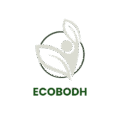In an age where single-use plastics are filling our oceans and landfills, the world is waking up to smarter, greener alternatives. At the forefront of this shift is bagasse—a powerful by-product of sugarcane that’s changing the way we think about food packaging.
Welcome to the Bagasse Revolution—where agricultural waste becomes a hero of the zero-waste movement.
🌱 What Is Bagasse?
Bagasse is the dry, fibrous residue left after sugarcane stalks are crushed to extract juice. For years, this agricultural waste was burned or discarded. Today, it’s being transformed into compostable, durable, and elegant food packaging—from plates and bowls to takeaway containers and coffee cups.
Key Features of Bagasse:
- ✅ 100% biodegradable and compostable
- ✅ Heat and water resistant
- ✅ Microwave and freezer safe
- ✅ Made from agricultural waste, not trees or petroleum
🍽️ Why Bagasse Is Revolutionizing Food Packaging
1. Zero Waste Origin
Unlike paper or plastic, bagasse is a by-product, not a resource that needs to be harvested. It gives value to something that would otherwise be discarded or burned, reducing both waste and emissions.
2. Plastic-Free Performance
Bagasse packaging stands up to hot meals, soups, and gravies without leaching chemicals or melting—unlike styrofoam or plastic.
3. Compostable Convenience
In commercial composting conditions, bagasse breaks down in just 60–90 days—leaving no toxic residue behind. That’s thousands of years faster than plastic.
4. Ideal for Food Service
From fast-casual restaurants and meal-prep brands to eco-conscious cafes and food trucks, bagasse is emerging as a cost-effective, stylish, and sustainable alternative.
🌎 Global Shift: Who’s Using Bagasse?
The demand for bagasse packaging is accelerating across the globe. Here’s how some leaders are driving the revolution:
- Whole Foods Market: Uses bagasse containers in their prepared food section
- Just Salad: Offers compostable bagasse bowls for in-store and delivery meals
- Chipotle: Introduced molded fiber (including bagasse) bowls to replace plastic-laminated versions
- Eco-packaging brands like Repurpose, BioPak, and Greenware are bringing stylish bagasse containers to market
📈 Market Trends & Growth
According to market research reports, the global bagasse packaging market is projected to grow at a CAGR of over 6.5% through 2030, fueled by:
- Regulatory bans on single-use plastics
- Rising consumer demand for eco-packaging
- Corporate sustainability targets in F&B and retail
🌟 In the U.S., states like California, New York, and Washington are pushing mandates that favor compostable food service ware—creating strong momentum for bagasse-based innovation.
📊 Quick Comparison: Bagasse vs Traditional Materials
| Feature | Bagasse | Plastic | Paper | Styrofoam |
|---|---|---|---|---|
| Compostable | ✅ Yes | ❌ No | 🚫 Often No (if laminated) | ❌ No |
| Heat Resistant | ✅ High | ⚠️ Medium | ✅ Yes | 🔥 Melts easily |
| Water Resistant | ✅ Yes | ✅ Yes | ⚠️ No | ✅ Yes |
| Made from Waste | ✅ Yes | ❌ No | ❌ No | ❌ No |
| Biodegradable | ✅ Fast | ❌ Never | ⚠️ Sometimes | ❌ No |
♻️ How You Can Join the Bagasse Movement
Whether you’re a business owner, food vendor, or conscious consumer, adopting bagasse packaging is a smart, impactful choice. Here’s how to start:
- 🍴 Restaurants: Switch to bagasse containers for dine-in and takeaway
- 🛍 Retailers: Offer bagasse-based serveware or lunch kits
- 🧑🍳 Home use: Choose bagasse plates and bowls for parties and gatherings
- ♻️ Compost: Make sure to dispose of used containers in a green bin or compost system
🧠 Final Thought: Turning Trash into Treasure
The Bagasse Revolution proves that innovation doesn’t always mean inventing something new—it can also mean rethinking what we’ve always thrown away. By giving sugarcane waste a second life, we’re not just cutting down on plastic—we’re creating a more circular, sustainable future.
So next time you’re packing a lunch or ordering takeout, choose bagasse—and be part of the packaging revolution that’s sweet on the planet.

